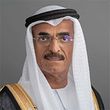Smart cities: Bridging innovation and sustainability for future
Urban spaces are evolving to combat climate change and enhance quality of life globally
by Abdullah Belhaif Al Nuaimi, Special to Gulf News · Gulf News“A home is not just a place to live but a feeling; make your new city feel like home,” Chinese philosopher Confucius once remarked.
But, on the contrary, people nowadays seek moments in nature and serene environments, leaving their homes and the hustle-bustle of cities, where, as they say — ‘getting a parking spot is like winning a jackpot!’
That’s because urban areas have become concrete jungles. More than 50 per cent of the world’s population lives in cities. Experts say this figure is expected to increase to almost 70 per cent by 2050, resulting in massive growth in demand for energy infrastructure.
Cities generate around 70 per cent of global carbon dioxide (CO2) emissions. Thus, climate action in cities is essential for achieving the ambitious net-zero emissions goal.
However, the hubs for culture, social, human, and economic development have gotten lost in planning, transport systems, water, sanitation, waste management, disaster risk reduction, access to information, education, and capacity-building — all considered relevant to sustainable development.
Including a stand-alone goal on cities and urban development in the 2030 Agenda for Sustainable Development, adopted by all United Nations members in 2015, makes cities and human settlements inclusive, safe, and resilient.
Inevitable factors
The smart cities have, therefore, become a necessity. It empowers citizens with access to resources and opportunities, making them active participants in shaping the ecosystem.
The high-tech infrastructure fosters community living and resilience, where technology and data converge to create an efficient and sustainable environment. It also means places where all living beings can dwell amicably amid flora and foliage.
The concept was introduced in 1994 in Amsterdam, Netherlands by establishing a ‘digital city’, the term now used as a ‘smart city’. It was designed to provide easy access to the internet and improve communication between the government and residents.
These cities leverage advanced technologies to optimise infrastructure, reduce emissions, and enhance the quality of life for the residents. As the world grapples with climate change, the objectives become increasingly vital, particularly in achieving zero emissions.
Goals to attain
A smart city integrates information and communication technologies (ICT) and the internet of Things (IoT) to manage assets and services. This includes traffic management to public transportation and energy distribution to waste management. The purpose is to improve urban services, reduce costs, and minimise environmental impact.
It involves reducing greenhouse gas emissions (GHGs) to the lowest possible levels and offsetting any remaining emissions through carbon capture and renewable energy projects.
Transitioning to renewable energy sources like solar, wind, and hydroelectric power is fundamental. Implementing energy-efficient technologies in buildings, street lighting, and public transportation systems helps reduce energy consumption while meeting service demands.
Since local governments can deliver on the net-zero emissions agenda, opportunities, challenges, and policy solutions can assist in next-generation energy systems to collect and analyse data in real time and manage city services efficiently.

These solutions can transform the landscape by creating new synergies to reduce emissions and improve efficiency by providing flexibility to support power system decarbonisation, security, and resilience.
Digital solutions in buildings, such as smart sensors and controls for thermostats and lighting, can help consumers use energy efficiently and unleash behavioural and lifestyle changes.
Setting benchmarks
Digital technologies are transforming the scenario by shifting to active and shared transport modes and improving public transport infrastructure.
The electrification of transport and proliferation of electric vehicles (EVs) enable greater integration of variable renewables via flexibility services such as smart charging and vehicle-to-grid (V2G) services. Time-of-use strategies can shift around 60 per cent of the power generation capacity needed to charge EVs away from peak loading.
Moreover, EVs and charging infrastructure can significantly reduce emissions from the transportation sector. Since advanced electrical grids use digital technology to monitor and manage energy flow, it ensures efficient distribution and waste reduction.
Sustainability in existing cities
Transforming existing cities into sustainable urban environments involves several practices.
Expanding and optimising public transportation networks can reduce reliance on private vehicles, lowering emissions and traffic congestion.
Incorporating parks, green roofs, and urban gardens helps to improve air quality, reduce heat islands, and enhance biodiversity.
Advanced waste management systems, including recycling and composting programs, reduce landfill use and promote resource recovery.
Similarly, smart water management systems monitor usage and detect leaks, ensuring efficient water use and reducing waste.
Leading by example
Cities like Copenhagen and Oslo are leading the way by investing heavily in renewable energy infrastructure.
Designed to be one of the most sustainable cities in the world, Masdar City in Abu Dhabi, UAE, incorporates renewable energy, green buildings, and efficient waste management systems.
Known for its smart traffic management and extensive use of IoT, Singapore aims to become a zero-emissions city by leveraging technology to optimise urban services.
Barcelona uses smart sensors to monitor air quality, manage waste, and optimise energy use, making it a leader in urban sustainability.
Recently, India greenlighted a mega project to build 12 industrial smart cities across 10 states. The world-class greenfield cities will be built with ‘plug-n-play’ (ready-made facilities with essential infrastructure like power and network, allowing industries to start operations immediately) and ‘walk-to-work’ concepts.
By positioning the country as a strong player in the ‘Global Value Chains’, the project (offering a massive scope for employment), will provide developed land parcels ready for immediate allotment, making it easier for domestic and international investors to set up manufacturing units.
Ambitions and opportunities
National, regional, and local governments, and citizen-led initiatives, can play an important role in incentivising and accelerating digitally-enabled transitions.
By providing financial incentives, resources, policy tools, and learning opportunities, they can help fund and implement their smart city initiatives.
(Next Thursday the author will discuss will discuss the invisible cost of war)
Dr Abdullah Belhaif Al Nuaimi is Chairman of the Advisory Council of the Emirate of Sharjah